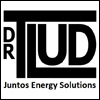I like what you wrote, except for the ten million dollars and the total number of variables. We do not need to know about every combination. We would like to know about SOME key combinations, but only after the method has been shown to work with just a few mainstream combinations..
1. Five fuels, maybe ten. No dirt or leaves or avoidable contaminations. Example: wood pellets: soft wood and hardwood. See the difference between them. Clearly state the expected quality in quantified ways, such as 500 g fills xxx ml and tests at 3 to 7 % MC. Then, if another fuel in the test is not close enough, THEN state some corrections. We are NOT after 5 digit precision.
Fuels: pick 8 of wood including pellets. Most places and stoves are only with wood. And pick 2 of other common biomass; . Maybe pick maize cobs and dung or ???? No need to overdo it, at least not until the overall methodology gets accepted. Some tests of some wood with major different moisture content (MC).
2. Stoves: burners of dry biomass. Major types: Rocket (pick two), TLUD-ND (Champion) and TLUD-FA (Mimi-Moto), simple stick-burners, and for benchmarks we need 3-stone fire and simple mud stove.
The objective is to show that the newly proposed methodology actually works. And show those results compared to the currently proposed standard tests. Show a solution.
That would be a major accomplishment. MAJOR!!!! Just a few repetitions with very few major combinations shows us about the method.
Please do not wait for the millions of dollars. Please restate your proposal.
Paul
F6823C7D-821A-4A5E-9823-502BFA523523@cruzio.com” type=”cite”> Stovers,
Harold excellent outline below on designing and setting up a test procedure – for the purpose of lab testing where findings can be taken to the field to establish the correct (best) stove for the site.
The main problem, I am now thinking, is that we are not given a clean sheet of paper to work out the different steps. If that was the case it would be easy. We have been ‘required’ to include two formulas that have made it impossible to come up with the desired method, spending many wasted years and countless millions(?) USD in the process. Still with no method.
The first is the energy efficiency calculation of ((total energy) – (unburned energy)) / energy into the pot.Problems:1) When you stop a stove when the big hand strikes 12 and drag out all the unburned stuff you have a mixture of wet wood, dry wood, char, torrefied wood, and ash. The energy in that mess is hard to determine and impossible with any Robustness that is required for having a good method with such a variation of feedstocks.
2) There is NO standard energy values from books that we can use. Wild biomass contains all types of materials like bark, dead wood, cotton wood, leaves, nuts and berries, dirt and such. It must be measured.
3) The other formulas is where one takes the hydrogen in the biomass (estimated actually) and the hydrogen from the moisture and use it in the calculations to ’normalize’ the energy produced back to dry weight. A meaningless exercise. Comparing is done on a dry weight basis in the lab. Water in the wild fuel is just part of the fuel and should be reported as percent moisture but not used to lower the energy value of the fuel. We should determine what happens with using fuel having that moisture. If you were to take a dry fuel and runs it through the method. Then take the same amount of dry basis with a moisture of, say 20%, would the corrected results be the same as found using the dry biomass? I doubt it. In fact, if increasing moisture in biomass changes the amount of char thats produced (as been mentioned) that is proof you cannot apply that correction.
Its been like we are told we are required to use these formula in the method – WE DO NOT. Starting with a blank sheet and Harold’s guidelines any method we come up with that works will do. Real easy.
Then we will need about ten million dollars to buy stoves, all types of biomass and test out the procedure.
Regards
Frank
On Jan 15, 2017, at 4:35 PM, Crispin Pemberton-Pigott <crispinpigott@outlook.com> wrote:
This is how it should be done, as explained by Harold Annegarn:
Define the required output, the units and the accuracy needed. Define an acceptable range of error.
Working backwards from the result through the formulas needed, define the measurements needed, their accuracy and precision.
Describe the equipment needed to obtain those measurements and the conditions under which they shall be obtained.
The rest falls together. Terms needed are defined, and no term goes undefined.
The result is a list of required measurements with defined parameters that can be used to select equipment.
Thanks
FrankFrank ShieldsGabilan LaboratoryKeith Day Company, Inc.1091 Madison LaneSalinas, CA 93907(831) 246-0417 cell(831) 771-0126 office
